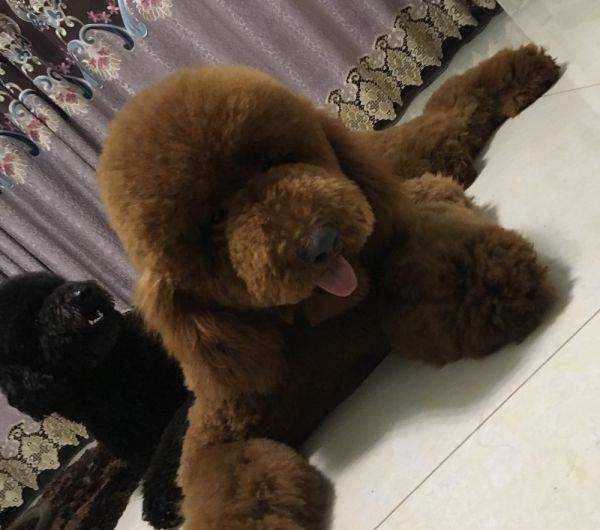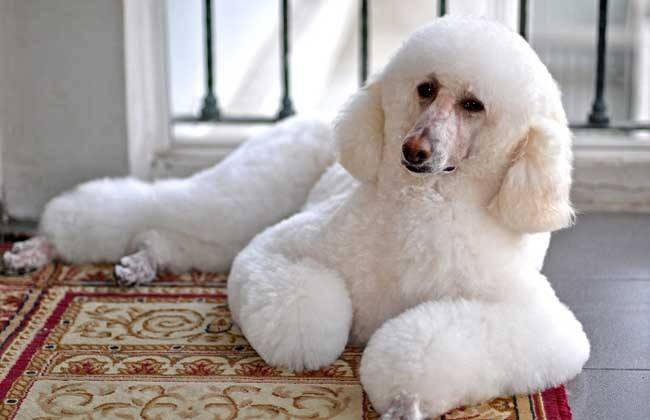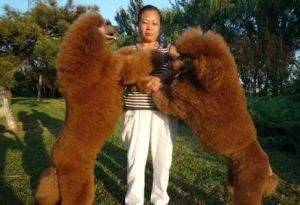The giant poodle is descended from the North African lewhisker dog, which came to Europe from Ibero-America. On the plains, the poodle would fetch game birds found in the water. It was originally a type of water hound, but was later raised by aristocratic women in the reign of Louis XIV and later renamed the Poodle. Vivacious, alert, intelligent and friendly, poodles are the second most intelligent dog breed.

Black, white and gray giant poodles must have black skin; Brown dogs are usually dark brown; Apricot dog hair should be as dark as possible to avoid possible discoloration.
Large poodle hair with curly or rush hair is usually black, white, brown and apricot. Brown must be pure; Gray must be unified, gray classification can neither black nor white; Apricot must also be a uniform color, neither near beige nor cream, nor near red or reddish brown or brown.
Poodle, hairy and fine, woolly in shape and curly, resilient and resistant to head pressure. The hair needs to be thick and dense and needs to be combed regularly into an even curly shape.

Corduroy Giant poodle, hairy and fine, woolly in shape and curly, forming a unique uniform length of fine corduroy. It should be at least 20 centimeters long. The longer the VIP’s hair, the more popular it is. The corduroy on both sides of the poodle’s head can be tied with a ribbon around the ears and divided to the sides to avoid untidy and beautiful hair.

Giant poodles can be divided into red, white, black, gray, champagne, cream, white and red, which are the origin colors of giant poodles. After years of pedigree optimization and color evolution, giant poodles can now be divided into many colors. We can choose our favorite giant poodle according to our color preference.

